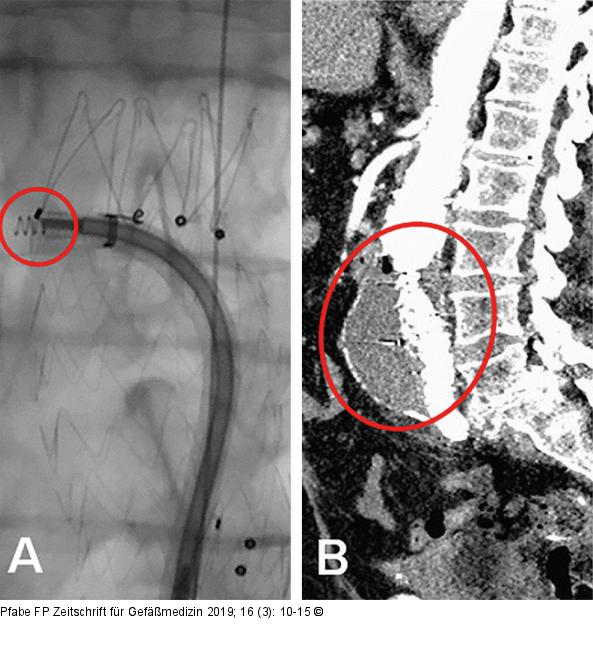Pfabe FP EndoAnchor-Implantation: Stellenwert, Möglichkeiten und Grenzen bei EVAR und „hostile neck“-Anatomie // EndoAnchor – implantation: value, possibilities and limits at EVAR and “hostile neck” Zeitschrift für Gefäßmedizin 2019; 16 (3): 10-15 Volltext (PDF) Summary Übersicht
| ||||||||||||||||||
Abbildung 5: EndoAnchor-Implantation EndoAnchor-Implantation und Verlaufskontrolle. (A): Angiographie (LAO 3°, CRAN 9°). Implantation eines EndoAnchors (roter Kreis); (B): CT-Angiographie (koronare Schnittebene), regelrechter Sitz der Prothese, kein Endoleak Typ Ia. |

Abbildung 5: EndoAnchor-Implantation
EndoAnchor-Implantation und Verlaufskontrolle. (A): Angiographie (LAO 3°, CRAN 9°). Implantation eines EndoAnchors (roter Kreis); (B): CT-Angiographie (koronare Schnittebene), regelrechter Sitz der Prothese, kein Endoleak Typ Ia. |








